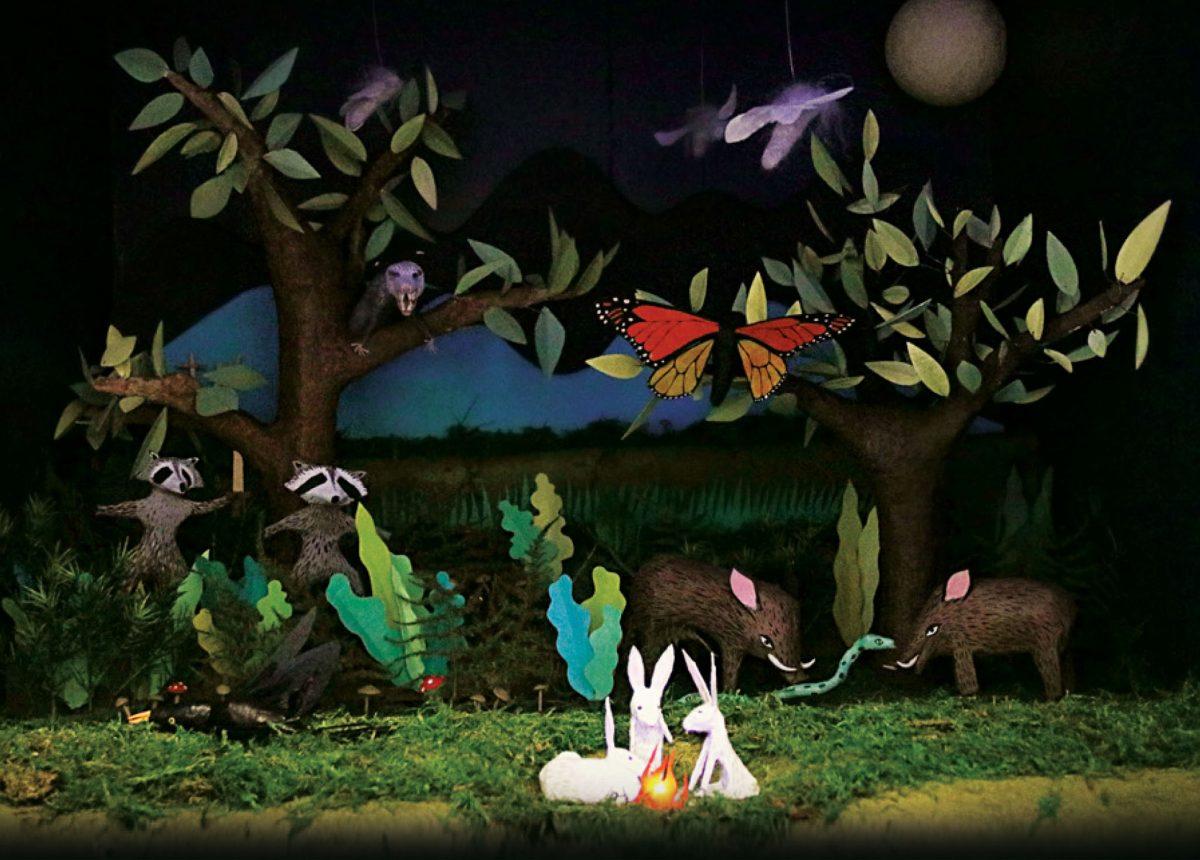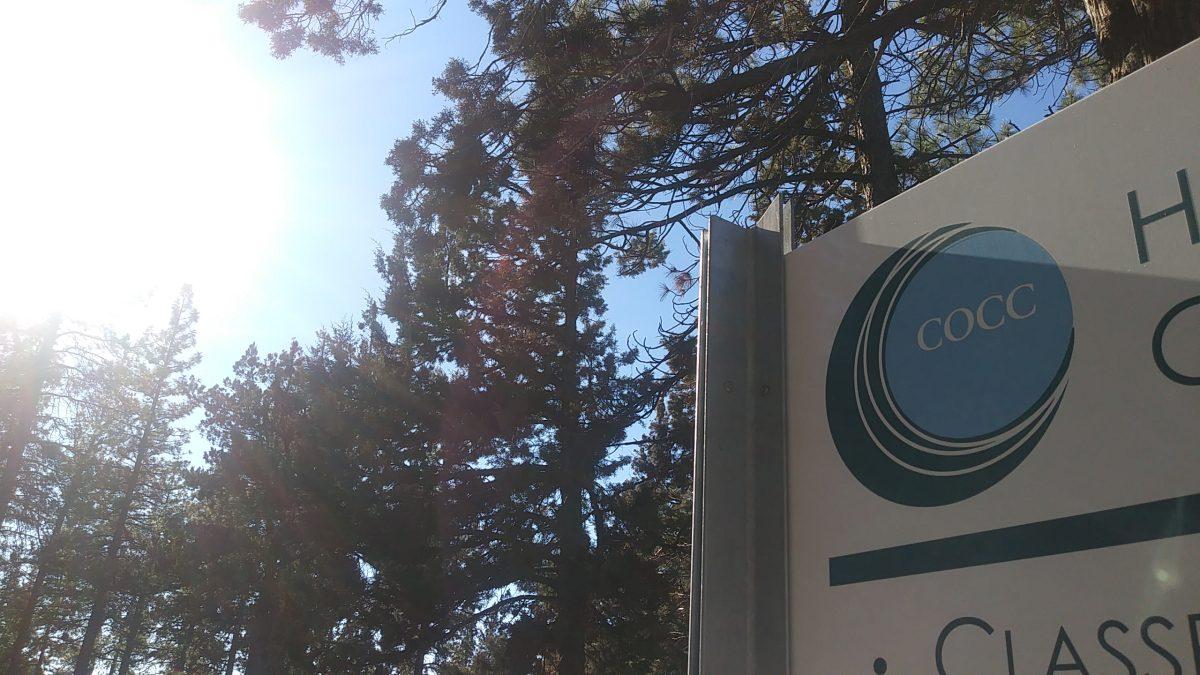(Above: a piece by Maren Inga Burck)
Unique pieces scattered the walls of Oregon State University Cascades as BFA students shared their final exhibition of work from their years at OSU – Cascades. The pieces presented at the Bachelor of Fine Arts show were inspired from a wide array of ideas, memories, passions, and concepts.
Unique influences and ideas engulfed the artist’s work displayed for the BFA exhibition. A group exhibition of the graduating BFA in Applied Visual Arts class of 2017 was held at OSU Cascades on, April 24.
The artists included Maren Burck, Gerald Carrell, Sarah French, Paige Rajnus, and Nancy Richmond. Kiel Fletcher, instructor for the visual arts BFA candidates and the program lead at OSU for two years now, helped the artists display their work for their exhibition.
Paige Rajnus
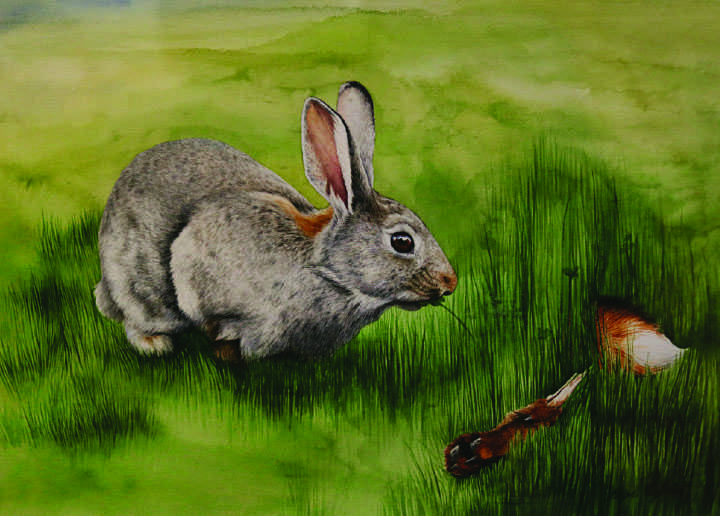
Rajnus has been drawing and painting ever since it was possible for her to hold a paper and pencil in her hand. A lot of her inspiration has come from her grandmother.
“I used to go to her house to paint, and that sort of inspired me. That artistic instinct that was already there,” Rajnus explained.
The subjects of her work are usually animals, mostly wildlife and animals that you can see around Central Oregon, “I have created a series of paintings and drawings revolving around the cycle of life and death. Decay and regeneration are two forces that work together in surprising ways. Good can come from apparent tragedy,” Rajnus explained.
Rajnus has been using watercolor and graphite as her favorite mediums. “I’ve sort of honed those two mediums. I’ve dabbled in other things like printmaking and oil paint, but watercolor and graphite feels right,” Rajnus said.
“My hope is to tell a story based on facts. My work is centered upon the inescapable realities of this earth which can be harsh and include both pain and death. The story, however, should not stop there,” said Rajnus.
Nancy Richmond
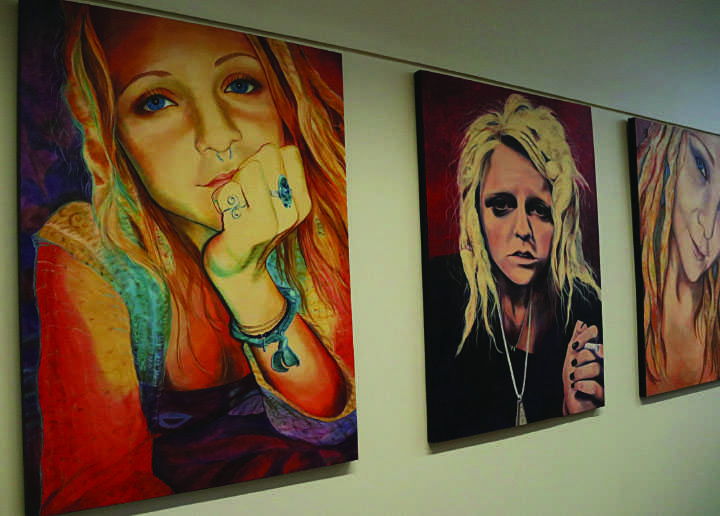
The large scale, colorful oil paintings that Richmond displayed are all portraits of her granddaughter.
“Through the use of portraiture and scale, I do not merely want to capture the image with my brushes; rather with careful, colorful strokes, I want to capture the emotion within each painting, expressed through the gaze of the subject, and the messages it conveys,” Richmond explained in her artist statement.
Originally, Richmond wanted to do a series of paintings inspired around the phrase ‘hear no evil, speak no evil, see no evil’, but ended up changing the series to be created around the words Faith, Hope, and Love, which were all titles of the three paintings.
As far as mediums, Richmond favors oil paint: “I’ve tried acrylics, charcoal, and pastels. I tend to really like oil paint because of how long it takes to develop these, it takes you months. I like the process and the challenge of it.”
Richmond has been going to school at Central Oregon Community College and OSU-Cascades for seven years now to get her degree. “I came back to school and wanted to push the edge and see how well I could do as an artist, that was the goal,” she said. “It was a matter of finally being able to pursue my passion.”
Gerald Carrell
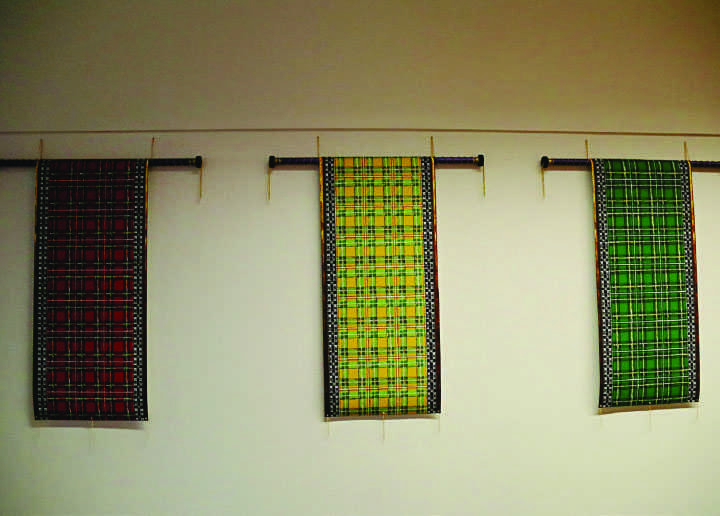
Carrell’s inspiration for his digital prints and 25 second video came from his love of race-car driving and layers. As Carrell will tell you, he thinks of everything in terms of layers.
The collection of digital prints with wood and gold chains is made out of many digital layers in Adobe Photoshop, and each print represents a famous race car driver that Carrell admires.
The three race car drivers featured are from the Formula One racing community, the inspiration for the pattern in his tapestries comes from Jackie Stewart’s Royal Family Tartan that he would wear on his helmet.
“ I continue the tartan pattern in the other tapestries and honor Brazil’s Ayrton Senna and Scotland’s Jimmy Clark with helmet and team colors I feel represent their fighting spirits,” Carrell explained in his artist statement.
“Every color is a separate mono-type print, and I layered all of those photos onto a textured background that makes it look like denim. I wanted it to look like fabric and if you investigated it closer, you can tell that it’s not,” Carrell explained.
Sarah French
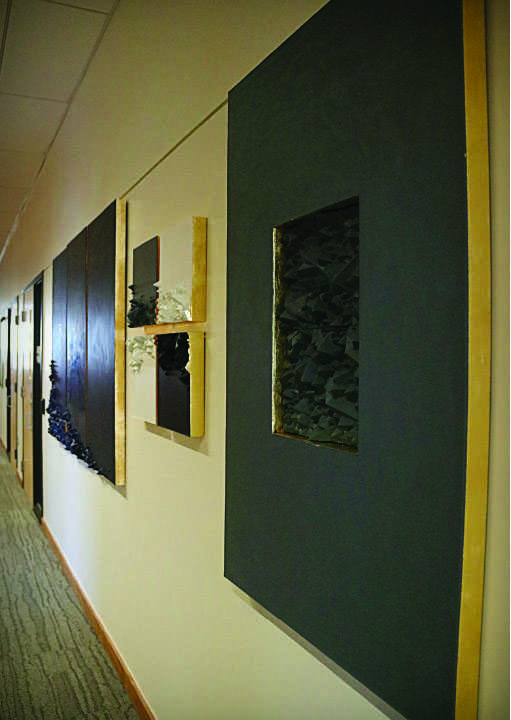
Sarah French was a science major before she began pursuing a Bachelor of Fine Arts, and explains in her artist’s statement how she draws from her knowledge in the field of science as the inspiration for her crystal-formation pieces:
“This specific body of work is inspired by natural elements that form underneath the earth’s crust. Nature’s ability to create something society finds as aesthetically pleasing out of a violent process or heal after trauma is of particular interest to me.”
The six pieces displayed are all made out of encaustic, wood panel, and gold leaf paint.
“While it’s aesthetically pleasing to look at (the gold leaf paint), I think it also lends itself to the conversation that’s around this, bringing value to experience and seeing it in a different light,” French explained about the use of the gold leaf paint on the sides of her pieces.
French mentioned that she enjoys working with her hands the most, which means that most of her work is very involved.
Maren Inga Burck
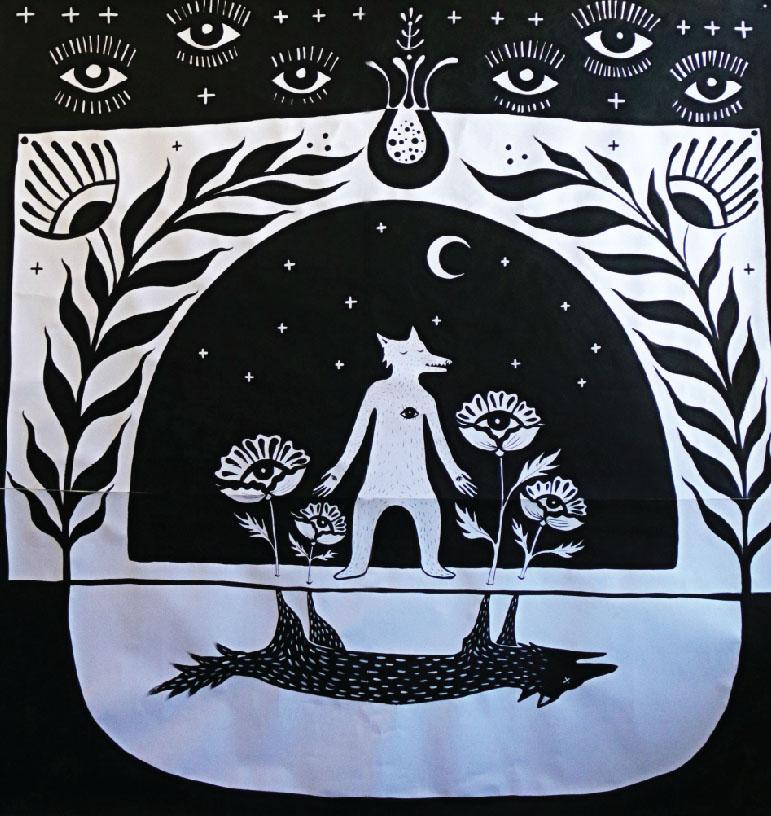
Like each of the artists, Burck has a unique background in art. After high school, Burck decided to move to Corvallis to go to school to pursue her career as an artist. She ended up taking a few years break to move somewhere else and work with several different artists in various practices. Three years ago, Burck moved back to Central Oregon and is now working in Sisters designing tile for a local business.
Burck displayed three pieces in the exhibition, two large scale black and white paintings and one mixed media piece.
Within Burck’s art, she “Strive(s) for balance between intricacy and simplicity in concept composition, lines, and shapes. I struggle with and give into symmetry, accept humor and embrace sarcasm.”
Burck’s mixed media piece is something straight out of her childhood memories, real or not, titled “Dreamscape Diorama”.
“This is a mish-mash of memories, characters, and illustrations that I remember from my childhood,” she said. “So it’s kind of this idea of how we kind of make up our childhood history.” Burck went on to explain that she has stories and memories that her siblings would tell differently. “It actually doesn’t matter if it happened or not, because it’s your memory, it affects and develops how you see yourself. ”
By Katya Agatucci | The Broadside
Contact: [email protected]


